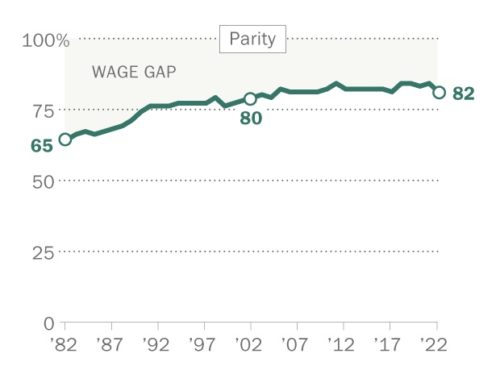Adults under the age of 35 — the so-called millennial generation — are spending more than they make.
They are either borrowing or depleting assets to pay for their lifestyles, resulting in a negative savings rate of 2 percent, according to Moody’s Analytics and the U.S. Commerce Department.
In contrast, the savings rates for older Americans are 3 percent for those 35 to 44, 6 percent for those 45 to 54, and 13 percent for those older than 54.
Despite those higher rates, the saving picture for all Americans is bleak. In 1959, the overall U.S. savings rate was 8 percent. It is 2 percent now.
The major culprit is stagnant income.
According to every major data source, the vast majority of American workers — white-collar and blue-collar, with and without college degrees — have endured decades in which wages have risen sluggishly, if at all. Earnings have significantly underperformed productivity growth, regardless of occupation, gender, race/ethnicity or education level.
A Pew Research Center survey in August indicated that 56 percent of Americans said their family’s income was falling behind the cost of living and 37 percent said their family’s income was staying about even with inflation. Only 5 percent reported they were beating inflation.
Why are savings rates important?
Macroeconomic theory tells us that savings equal investment. For our economy to grow, we need national savings, because these savings are what are invested in factories, equipment and labor. Our current 2 percent savings rate can be expected to create about 2 percent real growth.
Low national savings rates indicate that stagnant real wages have caused most Americans to consume and save less.
Income from savings supplements pension incomes. Pensions do not fully fund retirements.
Millennials’ earnings have lagged behind those of the overall populace. Americans under 35 in 1995 earned real wages that were 9 percent higher than they are making now. As a consequence, millennials’ net worth declined to $10,400. This is down 42 percent from the earlier generation, according to the Federal Reserve.
Workers age 25 to 34 have a 6.2 percent unemployment rate, slightly above the national average.
Adding to the millennials’ problems is debt. The increase in student loan amounts has been particularly painful to this age group. In 1995, borrowers under 35 had median student debt of $6,100. It has risen to $17,200.
We need to reverse millennials’ negative saving rate.
For them to achieve financial security, they need to start saving earlier and save more.
Why is earlier important? The appreciation of assets is a function of compounding. For example, people who are 24 and save $1 and subsequently earn 6 percent per annum will have $8 when they are 60. People who wait until age 36 to save $1 and then earn 6 percent annually will only have $4 when they are 60.
Why do we need to worry about millennials’ spending habits?
Over the past few years, young people around the globe have protested to show their dissatisfaction with the status quo. While America does not face a severe crisis, the problems our millennials face strike a discordant note. Many in the Occupy Wall Street Movement were in this age group.
They protested mainly about social and economic inequality, corruption and the undue influence of corporations and the financial sector over government. They stridently argued that they represented 99 percent of the population who have suffered while the 1 percent has prospered. Ultimately, armed force was required to break up their protests.
The lack of savings by millennials will add to Americans’ angst over wealth inequality. We certainly cannot assume that their savings — and their satisfaction — will magically rise to the levels enjoyed today by older groups.
Instead, we should feel their pain. Their debt undermines not only their future, but our future.
Originally published in the Sarasota Herald-Tribune



